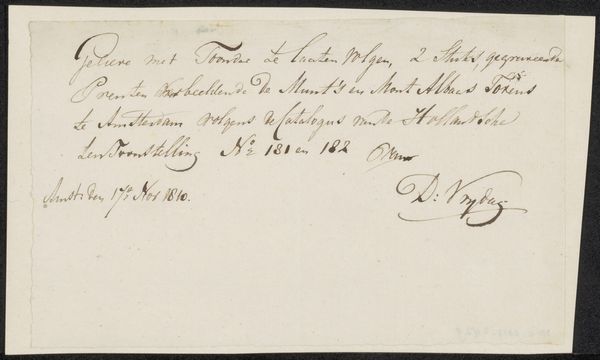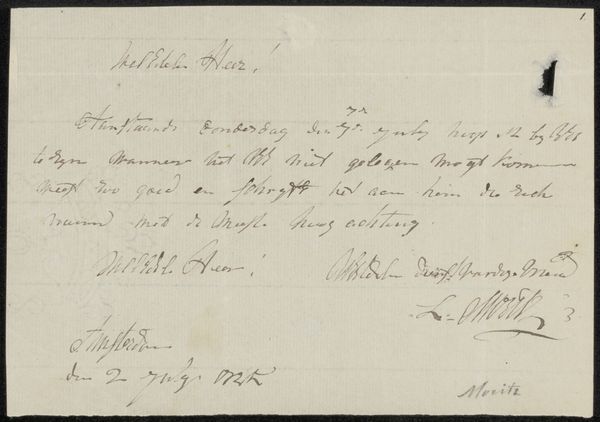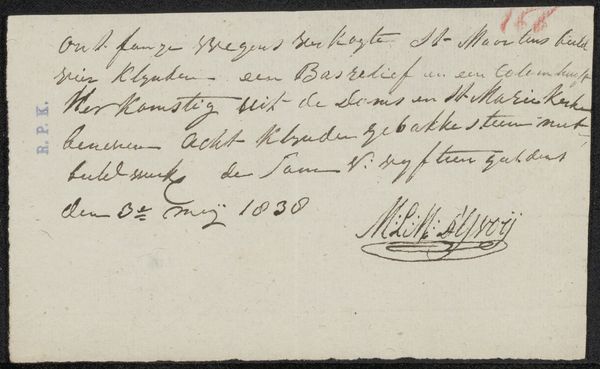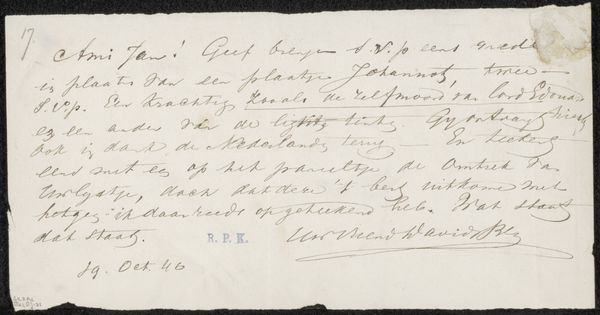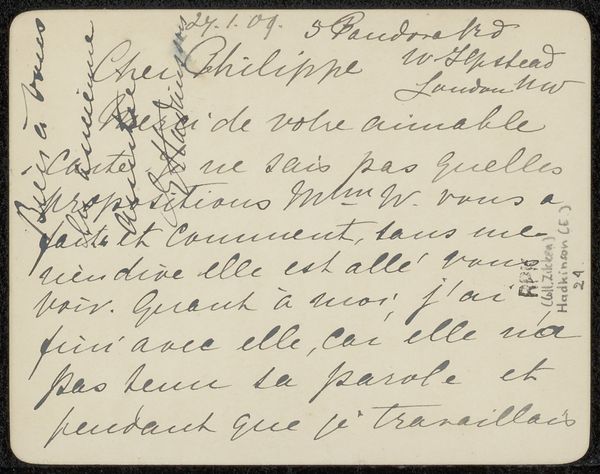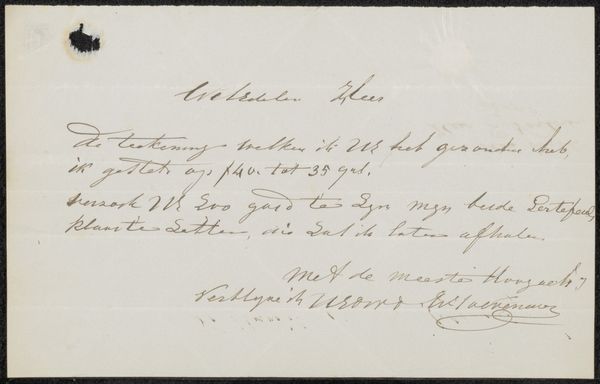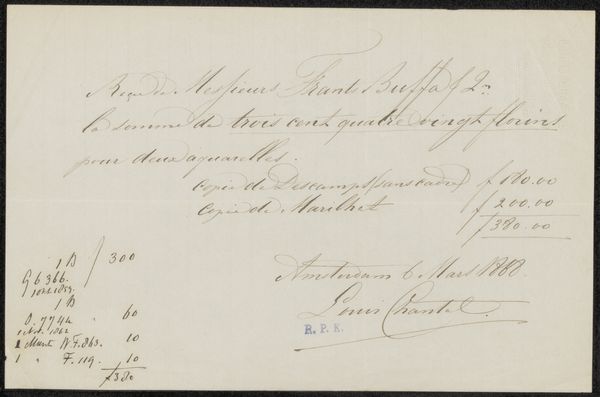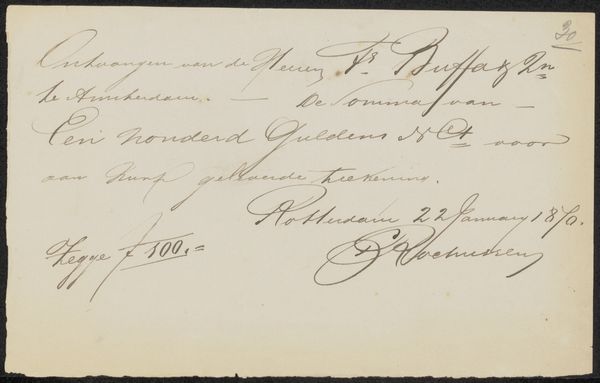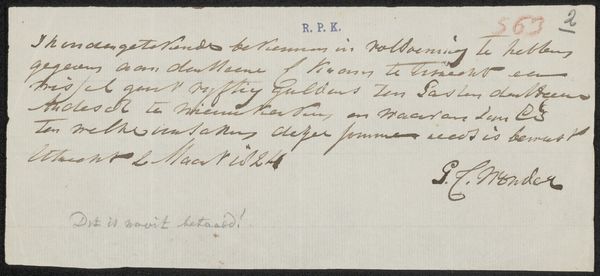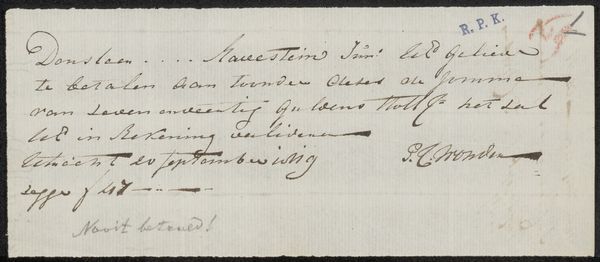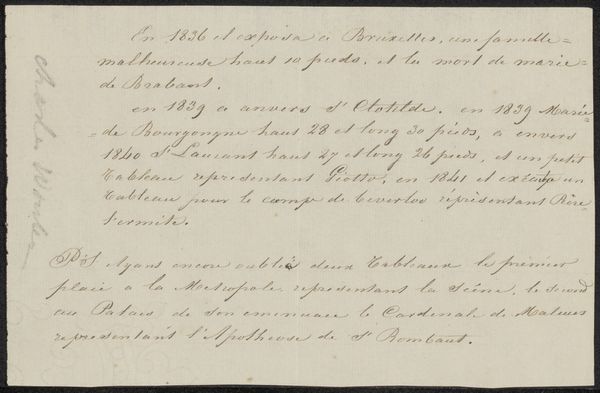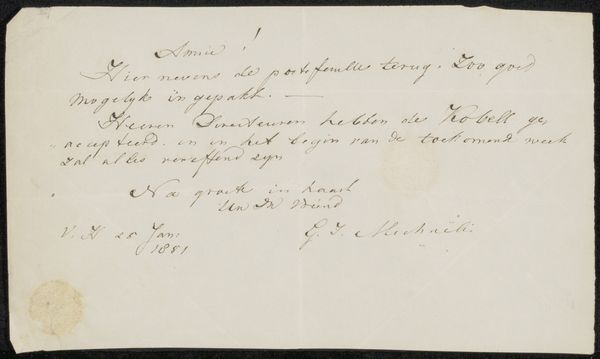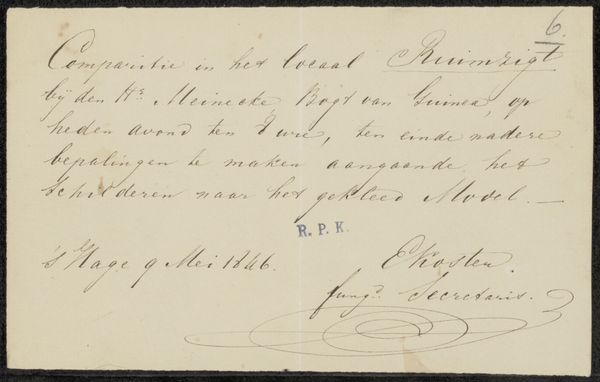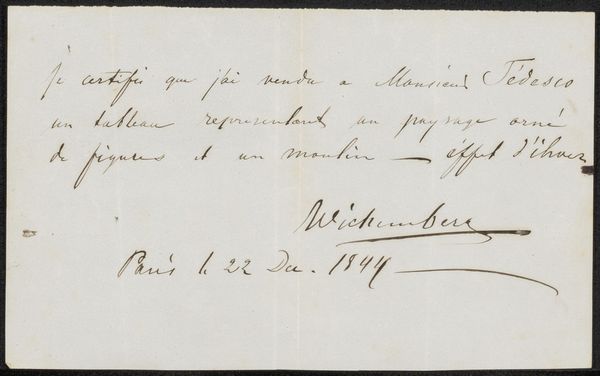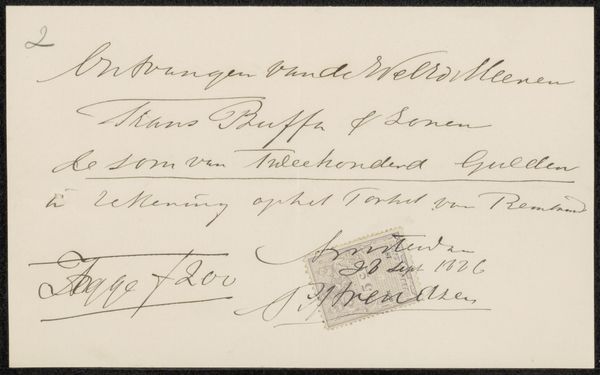
drawing, ink, pen
#
drawing
#
script typography
#
hand-lettering
#
old engraving style
#
hand drawn type
#
hand lettering
#
ink
#
hand-drawn typeface
#
thick font
#
typography style
#
pen
#
handwritten font
#
calligraphy
#
small lettering
Copyright: Rijks Museum: Open Domain
Editor: This is a piece called "Brief aan Philip Zilcken," possibly from 1913, by J. de Ness, created using ink and pen. It's essentially a handwritten letter, and what strikes me is the intimacy and formality existing together. How do you interpret this work? Curator: It’s interesting to consider how a seemingly straightforward piece of personal correspondence can become art. Looking at it through a contemporary lens, we have to think about accessibility and who this act of communication was meant for. What power dynamics are at play when written correspondence was often the only mode to make connections with other humans? It also calls to mind the performative aspect of handwriting at the time. How much of their identity was caught up in something so performative? How does that inform your understanding? Editor: That's a good point, especially since now we mostly communicate via typing. It brings a different kind of deliberate action, like it contains layers beyond just relaying simple messages. Curator: Exactly! The labor involved makes this sort of direct mark making so valuable, don’t you think? These visual echoes give value and also give it additional meaning. In a world oversaturated with text and typing, the intentional act of writing takes on greater significance. We may also want to note handwriting as another form of a self portrait of sorts; this artist used only their thoughts and movements through text as the image to communicate. Editor: I never really considered that – writing as a form of drawing. Curator: Considering the social and historical context shifts our understanding of such objects and I believe that through acts of correspondence we can establish more equal opportunities in cultural productions of marginalized artists by remembering them. So what does all that thinking mean to you? Editor: I think I appreciate this letter now not just for what it says but as a representation of communication at a specific time. Thanks for unpacking it with me! Curator: My pleasure! It is always exciting to discuss the meaning of art, and how that intersects with its creation.
Comments
No comments
Be the first to comment and join the conversation on the ultimate creative platform.
